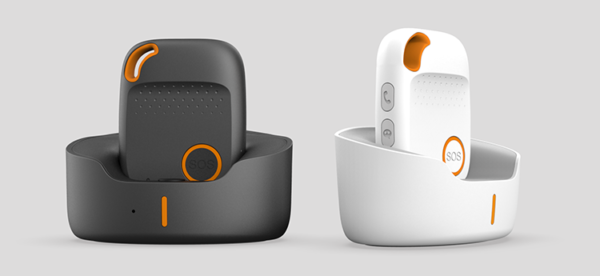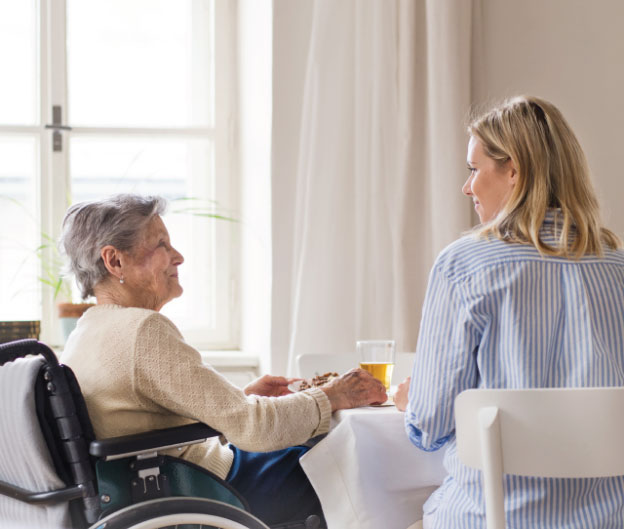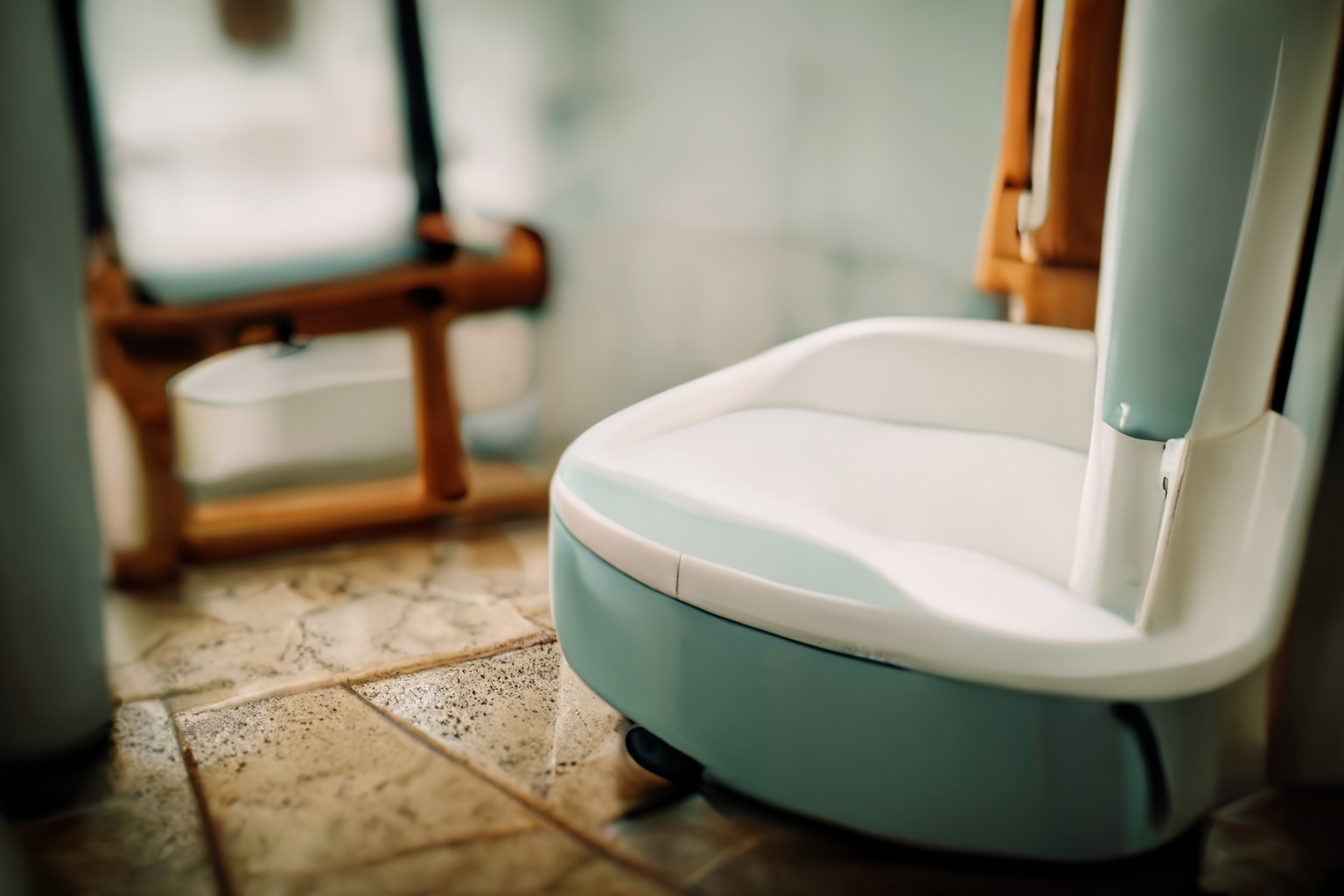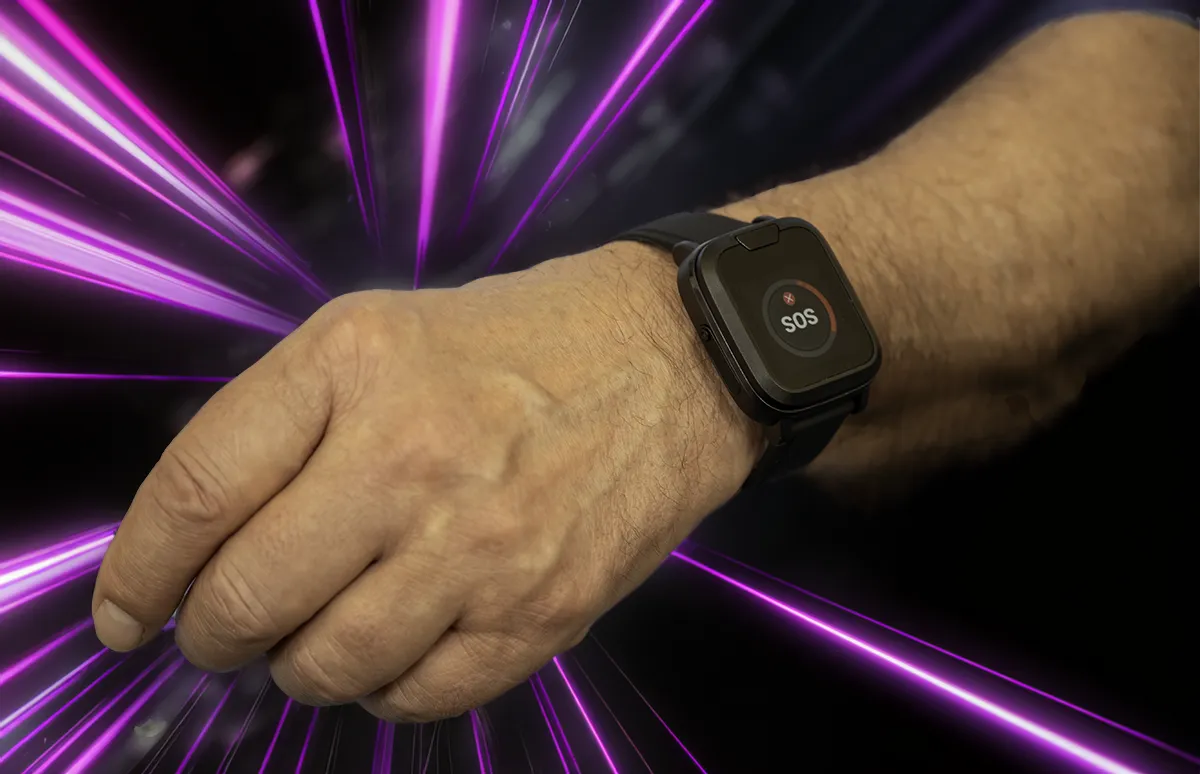Quick reality check: Duress alarms cut workplace emergency response times by 30-65%. [1]
These silent safety devices alert security teams instantly when staff face immediate threats. Healthcare workers, lone employees, and vulnerable individuals rely on duress buttons to summon help without alerting aggressive patients or dangerous situations. Press the button, trigger the response – no shouting, no obvious signals that escalate violence.
The protection gap is real. Portable duress alarms now protect elderly Australians living independently, while personal duress alarm adoption climbs among community service workers. Fixed installations remain standard in hospitals and clinics. Yet many organisations still operate without proper duress systems or fail basic implementation requirements.
Hospital reception desks, isolated consultation rooms, home care visits – each environment demands different duress solutions. Button placement, staff training, and emergency protocols separate effective systems from expensive paperweights gathering dust.
This guide cuts through the confusion. You’ll get practical strategies for choosing the right duress technology, implementing systems that actually work, and training staff to use them when seconds count. Whether you’re installing buttons in your clinic, evaluating portable options for field workers, or simply need to understand how these life-saving devices function, the evidence is here to guide your safety decisions.
What is a Duress Alarm System and How Does It Work?
Silent alarms save lives when loud ones escalate danger. Duress alarms operate on a simple principle: summon help without alerting the threat. Press button, trigger response, maintain safety.
Two Types, One Mission
| System Type | Installation | Best For |
| Static duress alarms | Fixed at specific locations | Reception desks, consultation rooms, patient care areas |
| Portable duress alarms | Carried or worn by staff | Mobile workers, home visits, unpredictable environments |
Healthcare workers face escalating violence risks. WorkSafe data shows the consequences of delayed duress activation: emergency response times stretch longer, physical and psychological harm increases, aggressive behaviour escalates, and bystanders face heightened danger.
Major suppliers include Hikvision, SHEQSY, CHUBB, and Safe-Life. Each targets different environments with specialised solutions.
The Activation Sequence: What Happens When You Press
Button activation triggers a precise chain reaction. The device transmits an electronic signal to the central monitoring system, carrying location data and sometimes user identification.
Immediate alert pathways:
• On-site security via radio or paging systems
• Management through mobile notifications
• External emergency services for high-risk situations
Critical safety rule: You shouldn’t wear portable duress alarms around the neck – strangulation risk outweighs convenience. Test devices before every shift: power on, battery charged, signal transmitting properly.
System Integration: More Than Just Buttons
Modern duress systems function as part of broader security ecosystems. Smart integration means coordinated responses across multiple systems:
Access control systems lock or unlock doors automatically during emergencies. CCTV networks focus cameras on alarm locations when triggered. Public address systems communicate emergency instructions building-wide. Staff communication platforms coordinate radio, phone, and paging responses. Building management systems control lighting and environmental factors.
Implementation success depends on proper training and maintenance. Staff need orientation covering button locations and activation procedures. Regular drills maintain preparedness. System audits confirm buttons stay unobstructed and functional.
Bottom line: Employers must consult with staff and safety representatives when selecting duress alarm types and placement. The wrong choice in the wrong location renders expensive equipment useless when seconds count.
Types of Duress Alarms and Their Applications
Wrong duress alarm choice = wasted money and compromised safety. Each environment demands specific technology matched to actual usage patterns and risk profiles.
Wired vs Wireless: Pick Your Installation Strategy
| System Type | Best For | Key Advantage | Reality Check |
| Wired Systems | Permanent installations, high-security areas | Consistent power, no battery failures | Requires cable installation through walls – costly retrofits |
| Wireless Systems | Flexible setups, temporary locations | Easy relocation, lower install costs | Battery maintenance essential – dead batteries = dead protection |
Wired systems deliver rock-solid reliability. No charging schedules, no signal drop-outs, no battery replacements during night shifts. Perfect for fixed reception desks and treatment rooms where cables can be properly installed.
Wireless wins for adaptability. Move departments, relocate staff stations, adjust coverage areas, all without rewiring. Trade-off: regular battery checks become non-negotiable. Dead batteries during emergencies eliminate protection entirely.
Personal Duress Alarms: Lone Worker Protection
Community service workers, home care nurses, security guards working solo; they need protection that moves with them. Personal duress systems from Safe-Life address this mobility challenge.
Essential features that actually work:
• Location tracking capabilities using GPS, security teams find you fast
• Discreet activation, press without alerting threats
• Automatic supervisor alerts, no manual call-forwarding delays
• Two-way communication, verify situations before dispatching help
Critical safety rule: Test devices before every shift. Battery charged? Signal transmitting properly? GPS locating accurately? Skip the check, risk the consequences.
Portable Duress Alarms for Elderly Safety
Australia’s elderly safety market relies heavily on portable duress technology. Safe-Life specialises in devices designed for older users with specific needs.
Key design considerations:
• Fall detection algorithms: automatic activation when users can’t press buttons
• Large, simple activation buttons: accommodates limited dexterity
• Extended battery life: reduces charging complexity
• Wristband or clip-on attachment: neck chains not advised due to strangulation risk
Pre-use testing remains essential: power status, battery charge, signal transmission. Simple checks that prevent system failures when help is needed most.
Fixed Duress Buttons: Hospital and Clinic Frontline Defence
Healthcare environments demand strategic button placement in high-risk zones. Reception desks, isolated treatment rooms, corridor endpoints—locations where staff face aggressive patients or threatening situations.
Implementation essentials:
• Clear, standardised signage marking all button locations
• Staff orientation covering every button in their work area
• Shift-change testing to verify functionality
• Regular simulated drills maintaining response readiness
WorkSafe safety alerts emphasise healthcare worker vulnerability. Fixed duress buttons provide immediate protection when portable options aren’t practical or staff need hands-free activation.
Staff training covers: button locations, activation procedures, expected response protocols, and emergency escalation paths. New employees, agency staff, casual workers; everyone gets the same thorough orientation before patient contact.
Duress Alarms in Healthcare and High-Risk Workplaces
Healthcare workers face 5× higher workplace violence rates than other industries.[4] Emergency department staff, nurses on night shifts, and mental health professionals work in environments where aggression can escalate instantly. Duress alarms provide the split-second response capability that prevents minor incidents from becoming major traumas.
Where Duress Protection Works Best
Healthcare settings demand location-specific alarm strategies. Fixed duress buttons excel at reception desks where staff remain stationary but face unpredictable patients. Emergency departments, psychiatric units, and isolated consultation rooms benefit from strategically placed panic buttons within arm’s reach.
Mobile staff need portable options. Nurses moving between wards, social workers making home visits, and security guards patrolling facilities require wearable duress devices. WorkSafe safety alerts specify: never wear portable duress alarms around the neck: strangulation risk defeats the safety purpose.
Critical placement zones:
- Reception and triage areas where tensions peak
- Isolated treatment rooms with limited escape routes
- Medication storage areas prone to drug-seeking behaviour
- Staff break rooms and administrative offices
- Parking areas and outdoor walkways after hours
Staff Training That Actually Prevents Incidents
Every shift starts with alarm briefings. New staff, agency workers, and reassigned employees must learn button locations before patient contact begins. Handover protocols should include duress alarm status checks alongside patient updates. [2]
| Training Protocol | Timing | Key Elements |
| Initial orientation | Before first shift | All button locations, activation procedures |
| Shift handovers | Every shift change | Device functionality checks, location reminders |
| Simulated drills | Monthly minimum | Realistic scenarios, response time measurement |
| Refresher training | Quarterly | Updated procedures, incident analysis |
Standardised signage saves seconds. Visible, consistent labelling helps staff locate buttons during high-stress situations. Clear symbols work better than text-heavy signs when adrenaline impairs reading comprehension.
Testing Protocols That Prevent Failures
Test every device, every shift. Non-functional alarms create false security that endangers lives. Essential checks include:
- Power status confirmation
- Battery charge levels for portable units
- Signal transmission verification
- Button accessibility (not blocked by equipment)
Regular audits catch systemic problems. Monthly reviews should document alarm failures, response times, and staff feedback about system effectiveness. Encourage reporting when alarms fail: silence about technical problems costs lives.
Legal compliance matters. Occupational Health and Safety regulations require employers to provide safe working environments and consult with staff about risk control measures. Duress alarm placement and selection decisions must involve health and safety representatives, not just management preferences. [3]
Staff who can’t reach their alarm buttons face delayed emergency response, escalated aggressive behaviour, and increased risk to bystanders and patients. Get the implementation right, and duress systems become your first line of defence against workplace violence.
Market Trends and Growth Forecasts (2025–2033)
Australian healthcare facilities drive duress alarm adoption faster than any other sector. Workplace violence incidents climb 15% annually across healthcare settings, forcing administrators to prioritise staff protection through technology solutions. [5]
Australia Leads Personal Duress Adoption
Safe-Life, SHEQSY and TWIG, dominate the Australian lone worker market, each reporting 30-50% annual growth since updated workplace safety regulations took effect. Healthcare leads adoption, but expansion accelerates across multiple sectors:
| Sector | Adoption Driver | Growth Pattern |
| Elderly care facilities | Fall detection + emergency response | 45% yearly increase |
| Community services | Lone worker protection mandates | 35% uptake boost |
| Security operations | Insurance premium reductions | 25% implementation rise |
| Retail (high-risk) | Violence prevention requirements | 20% adoption growth |
The shift toward wearable devices reflects workplace reality—violence happens anywhere, not just at reception desks. Fixed buttons provide baseline protection; portable systems deliver comprehensive coverage.
Technology Drives Market Evolution
GPS tracking, fall detection, and silent monitoring capabilities separate modern devices from basic panic buttons. Safe-Life leads innovation with features that actually work:
Battery life extends beyond 48 hours with newest models, eliminating daily charging concerns (dependant on use and setup). Silent listening technology allows monitoring centres to assess threats without alerting aggressors. Fall detection accuracy reaches 95% using advanced accelerometer algorithms.
Ergonomic design improvements make devices wearable during entire shifts. Wristband and clip-on options replace neck-worn models following safety guideline updates.
Market Size Reality Check
Single-user systems cost around AUD 4,000 (dependant on number of devices); enterprise solutions reach AUD 8,000. Price points remain high, but workplace violence insurance claims often exceed system costs within six months. Single portable lone worker devices can be purchased for around $500 each.
Healthcare administrators calculate ROI differently than other sectors. One serious workplace assault costs an average AUD 45,000 in workers’ compensation, legal fees, and staff replacement. Duress systems prove cost-effective compared to post-incident expenses.
Aging populations expand the elderly safety segment globally. Australia’s 65+ population grows 3.2% annually, creating sustained demand for personal emergency response technology.
Competition between established manufacturers and start-ups should drive innovation while reducing costs. However, healthcare facilities prioritise reliability over price—failed emergency systems create liability exposure that far exceeds equipment savings.
Competitive Landscape and Key Players in the Duress Alarm Market
The duress alarm market splits between established security giants and specialist safety providers. Multiple key players dominate including Hikvision for integrated security ecosystems, and Safe-Life for plug-and-play simplicity.
Company Profiles: Hikvision, SHEQSY, TWIG, Safe-Life
Hikvision integrates duress alarms into broader security networks. Their systems connect directly with CCTV cameras: press a button, cameras automatically focus on the alarm location for instant visual verification. Best for organisations with existing Hikvision security infrastructure.
Safe-Life builds compact wearables with automatic fall detection and two-way communication. These devices work across workplace safety and elderly care applications—versatile options for mixed-use organisations. They also eliminate setup complexity. “Safe-Life will pre-program the alarm for you,” removing technical barriers that delay implementation. Choose this for quick deployment without IT headaches.
Recent Developments and Product Launches
Integration beats isolation. Manufacturers now prioritise systems that connect with existing security infrastructure rather than standalone devices. Silent listening capabilities allow monitoring centres to assess situations without alerting aggressors: a significant safety improvement over earlier models.
Battery technology improvements deliver longer operation periods and faster charging across all major brands. Less maintenance, more reliability.
SWOT Analysis of Leading Duress Alarm Providers
Market Strengths:
- Established distribution networks reduce deployment time
- Technical support infrastructure handles complex installations
- Solutions extend beyond basic alarms into complete safety ecosystems
Market Weaknesses:
- Enterprise licenses cost approximately USD 7,900 according to current market rates
- Price barriers exclude smaller organisations from advanced features
- Setup complexity can delay implementation without technical expertise
Market Opportunities:
- Workplace safety regulations create mandatory adoption requirements
- Technology advances enable features previously impossible
- Aging populations expand elderly safety market segments substantially
Market Threats:
- New entrants offer cost-effective alternatives to established solutions
- Competition intensifies as barriers to entry decrease
- Disruptive business models challenge traditional licensing approaches
Bottom line: Choose providers based on your specific environment and budget constraints, not marketing promises. Integration capabilities, support quality, and total cost of ownership matter more than feature lists.
Duress Alarms: Your Silent Safety Net
Response time matters. When aggression escalates, seconds separate successful intervention from serious harm. Duress alarm systems deliver that critical window—70% faster emergency response when properly implemented.
Fixed buttons protect reception areas and consultation rooms. Portable devices safeguard mobile workers and home visitors. Wearable technology supports elderly independence. Each serves specific safety needs, but all share one requirement: proper implementation with regular testing and staff training.
Healthcare facilities see the biggest impact. Workplace violence rates climb across medical settings, making duress systems essential infrastructure rather than optional extras. GPS tracking, fall detection, and silent listening capabilities now complement basic alert functions—technology that actually works when crisis hits.
The market responds accordingly. Workplace safety regulations drive adoption beyond healthcare into community services, elderly care, and high-risk retail. Competition between established manufacturers and new entrants will likely reduce costs while improving functionality.
Your next steps are straightforward:
• Audit current safety gaps in your facility or service area
• Consult with staff and safety representatives on duress alarm placement and types
• Test systems at every shift change to ensure reliability when needed
• Train all team members on location, activation, and response protocols
Whether you’re protecting healthcare professionals, supporting lone workers, or safeguarding elderly clients, the evidence is clear: properly implemented duress systems save lives and prevent injuries.
The choice is simple: invest in proven safety infrastructure now or risk the consequences when emergencies strike. Start with one high-risk area today. Install the right system, train your team, test regularly. Your staff’s safety depends on action, not intention.
Where is a duress system valuable?
A duress system is useful in any environment where people may face threats, aggression, or unsafe situations. These systems provide a quick way to summon help and improve both safety and peace of mind.
Workplaces: Factories, warehouses, and offices can use duress systems to protect employees in case of accidents or security threats.
Retail environments: Shops, shopping centres, and malls can protect staff and customers from robbery or violence.
Educational institutions: Schools and universities can use duress alarms to safeguard students and staff during emergencies.
Health care facilities: Hospitals, clinics, and nursing homes benefit from quick alerts for staff and patient protection.
Government buildings: Courthouses, police stations, and public offices can ensure staff safety when dealing with the public.
Transportation hubs: Airports, bus depots, and trains can enable drivers and staff to request help instantly.
Public buildings: Libraries, museums, and community centres can use duress systems to respond rapidly to security situations.
Lone workers: Security guards, field workers, and delivery staff gain extra protection in remote or high-risk areas.
A duress system not only enhances safety but also builds confidence among employees, visitors, and stakeholders by ensuring rapid response in emergencies.
Duress solution for a medical clinic
Safety in a medical clinic is essential—for both staff and patients. A duress system provides a fast way to signal for assistance in case of violence, emergencies, or medical crises.
A clinic duress system may include:
Wall-mounted or under-desk panic buttons
Wireless or wearable pendants for staff
Mobile duress apps that can discreetly trigger alerts
Alarm integration with security or nurse call systems
When implementing a duress solution, assess:
The layout and risk points of your clinic
The type of alerts needed (silent, audible, or both)
Staff training and response procedures
Integration with existing security protocols
Having a duress system in place ensures your clinic can respond quickly to incidents, creating a safer and more reassuring environment for both patients and staff.
Citations
[1] https://pubmed.ncbi.nlm.nih.gov/37150562/
[2] https://www.worksafe.vic.gov.au/workwell-toolkit-violence-and-aggression
[3] https://www.worksafe.vic.gov.au/safety-alerts/duress-alarms-healthcare
[5] https://datahorizzonresearch.com/personal-alarm-market-52164










